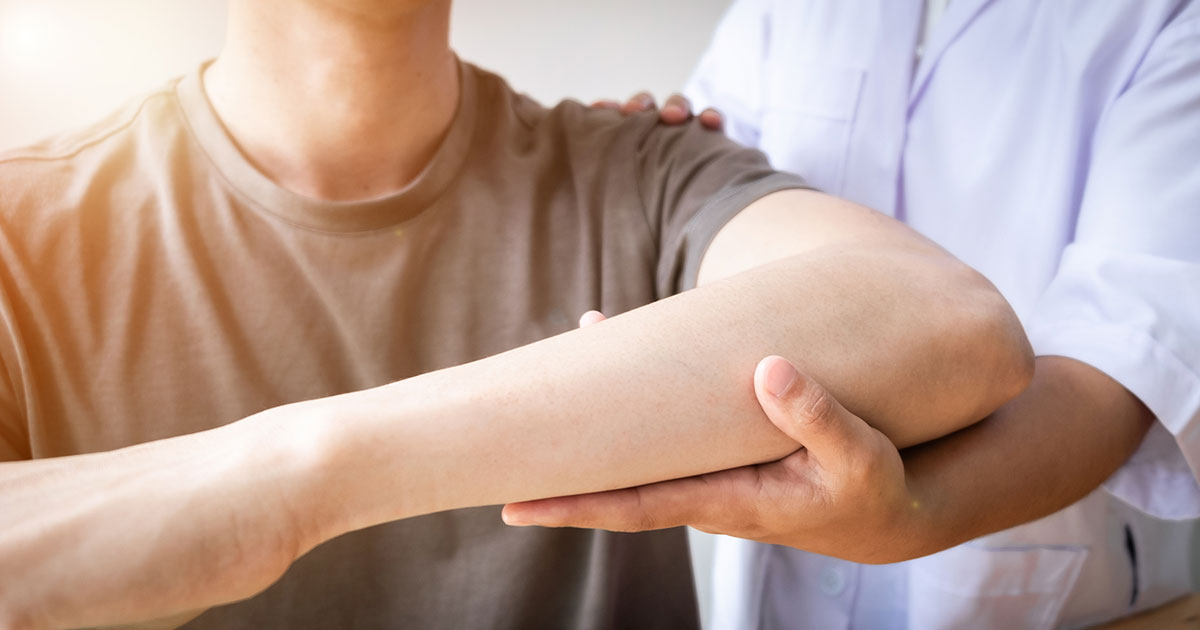
Where Is Your Rotator Cuff and What Is It?
The rotator cuff is located within your shoulder joint, connecting your shoulder blade to the humerus (upper arm bone). Made up of tendons and muscles, your rotator cuff enables you to rotate and raise your arm and provides overall stability and protection for the shoulder joint. Since it is involved in all shoulder motions, the rotator cuff is an integral part of our anatomy when it comes to arm-based movements.
What Are the Common Rotator Cuff Injuries?
Your shoulder helps you do so many things throughout the day and when healthy, provides an impressive range of motion. However, this range of motion combined with its high usage rate makes it susceptible to injury - and the rotator cuff is where a majority of shoulder injuries occur.
Common rotator cuff injuries include:
- Rotator Cuff Tear or Strains: A tear or strain of the rotator cuff can occur by repetitive stress, overuse, or excessive force. Tears or strains of the rotator cuff often cause intense pain. The effect these types of injuries may have depends on their severity, and may require surgery especially if the injury is a full tear extending completely through the tendon or pulling the tendon off of the bone. Rotator cuff tears are typically classified as acute (one traumatic incident leading to symptoms) or chronic/degenerative (a gradual deterioration and tearing of the tendons in the rotator cuff).
- Tendinitis: Tendinitis is inflammation or irritation of a rotator cuff tendon. This is the result of degeneration over time or overuse of the shoulder, and generally causes discomfort just outside of the shoulder joint. People who do activities where they have to frequently reach overhead, such as painters or swimmers, are more likely to develop this injury.
- Bursitis: The shoulder bursa (a fluid-filled sac in each of your shoulders) acts as a lubricator and cushion between the bone and tendons to reduce the amount of friction generated between your joints. If overuse, an injury, or medical condition causes inflammation of the shoulder bursae, it would be classified as bursitis.
Diagnosis and Evaluation of Your Rotator Cuff Injury
Given that the shoulder and the rotator cuff are intricately constructed parts of the body, different problem areas will need to be identified and assessed to determine the best plan of action. We recommend having a complete evaluation of your shoulder to help identify the region and tissues that are causing pain. This will help us map out the best plan of action for recovery.
Many times, a muscle or tendon of cuff muscles can be irritated. Other times, the capsule (which is the thick lining that covers the joint) can generate pain in the shoulder. With several bursae located in the shoulder, they too can become problematic by being impinged. We use specific treatments based on our examination to speed the recovery process for each problem. Once the discomfort is managed, we give you a home plan to continue the progression and improve performance.
Common symptoms for a rotator cuff tear include:
- Ongoing ache in the shoulder, at rest and at night
- Pain that affects sleep when lying on the injured side
- Considerable pain when raising your arm on the affected side
- General arm weakness
- Pain that radiates down your arm
Can a Rotator Cuff Tear Heal With Physical Therapy?
Yes, along with a thoughtful approach that includes an appropriate amount of rest prior to beginning any rehabilitation, rotator cuff physical therapy can absolutely be beneficial. Depending on the severity of your injury, you may need to undergo surgery prior to considering the use of physical therapy, however medical advice will vary from case to case. With minor tears and overuse injuries, it is possible to heal many cuff injuries without surgery.
Here is our general formula for repair:
- Rest: Resting after a rotator cuff injury can take from 3-5 weeks depending on the extent of repair needed and surgery. The muscle that has been reconnected to the bone must adhere well before moving. This usually means complete rest of the entire shoulder to allow proper healing and avoid re-injury.
- Recovery: During the recovery phase, you will work with a licensed physical therapist to gradually improve the range of motion and strength. Your ability to reach overhead will increase as well as your overall confidence. Little by little, you will be able to perform tasks without pain or restrictions that were painful or limited prior to your surgery.
- Return: At 12-16 weeks, you will be able to return to the activities you love with optimal function and performance. We will continue to work with you and develop a long term plan to keep you staying at your best.
What Rotator Cuff Exercises Are Recommended After an Injury?
Because each case is different, we recommend working with a licensed physical therapist who can formulate a personalized assessment and plan for your unique injury. The approach to your physical therapy may vary depending on the type of injury, your activity level, age, and other health factors. A physical therapist will be able to lead you through various exercises with proper mechanics, and provide you with the knowledge needed to continue exercises from the comfort of your home in between appointments. Working with a professional will also reduce the risk of worsening your injury or ending the recovery process too soon.
Exercises and stretches assigned by your physical therapist will be focused on getting back your full range of motion, pre-injury strength, and getting rid of your shoulder pain. They may utilize exercise equipment such as resistance bands, medicine balls, or lightweight dumbbells as therapeutic tools. Having a structured approach also gives you the benefit of having your progress tracked and being able to modify your exercises and treatment plans according to where you are in the recovery process.
How Long Does It Take For a Torn Rotator Cuff to Heal Without Surgery?
For rotator cuff tears that do not require surgery, your recovery time will still be largely dependent on the severity of your injury and your commitment to a treatment plan and physical therapy exercises. In most cases, a full recovery from a rotator cuff tear will take between three and four months.
Conclusion
Rotator cuff tears and associated shoulder injuries are highly common. In fact, nearly two million people in the United States visit their doctors for rotator cuff issues each year. While the recovery takes dedication and discipline, it can be done and we can help.
If you or someone you love is experiencing shoulder pain and needs medical advice, our team at Keystone Therapy is ready to help. We are highly focused on providing individualized care, and offer high-quality, 1-on-1 physical therapy sessions. We can even bring the physical therapy session to your home, making the process even more painless for you. Contact us today to get your recovery started.
